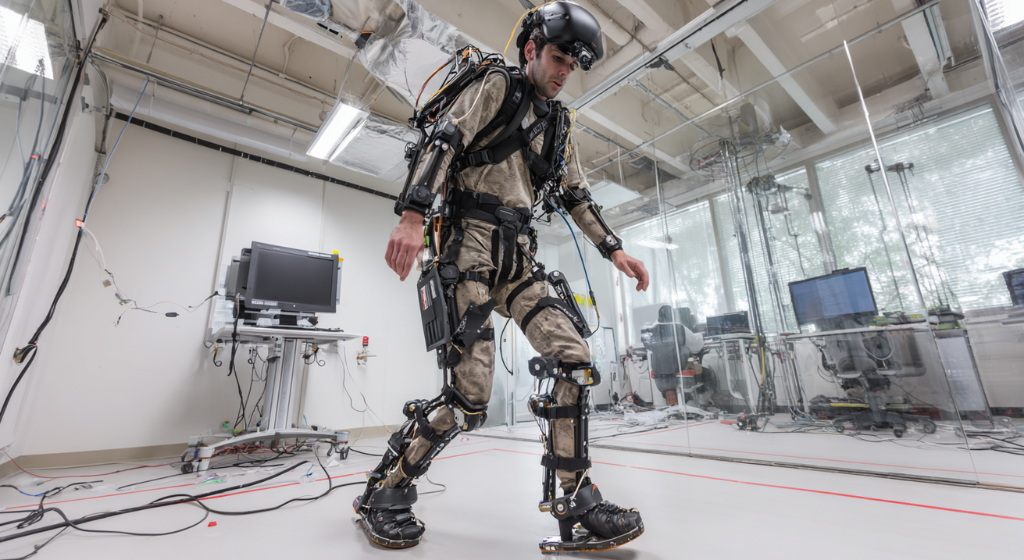
China’s HumanoidExo wearable suite enables robots to learn complex tasks and balance from human motion data, pushing humanoid robotics training far beyond video or simulation limits. (Source: Image by RR)
Motion Data Overcomes Limitations of Video and Simulation Training for Robots
Researchers in China have unveiled an innovative wearable exoskeleton system called HumanoidExo that dramatically enhances how humanoid robots learn from humans. Developed through a partnership between China’s National University of Defense Technology and appliance conglomerate Midea Group, HumanoidExo captures detailed full-body motion in real time, allowing robots to learn balance, walking, and delicate tasks from real human demonstrations rather than just video or simulation data. This real-world motion capture, as noted in interestingengineering.com, offers a new, more accurate training method that directly addresses a longstanding issue in humanoid robotics: keeping balance and stability when transitioning from simulation to physical environments.
HumanoidExo’s suit includes motion sensors tracking key joints—particularly the arms—and incorporates a LiDAR scanner to monitor posture and body changes dynamically. The system pairs that hardware with a two-part AI architecture called HumanoidExo-VLA, which includes a vision-language-action model to understand what task is being performed and a reinforcement learning controller that helps the robot maintain balance while executing motions. In experiments, the team trained a Unitree G1 robot using both exoskeleton-derived data and teleoperated sessions. While baseline success on a complex pick-and-place task was just 5%, after training with 195 exoskeleton-captured sessions the robot achieved around 80% success—approaching the performance seen from over 200 pure human demonstrations. Remarkably, the robot also learned to walk from captures of a human walking—even though walking was not explicitly part of the training objective—and could recover from external perturbations mid-task to resume its operation.
The researchers argue that the biggest barrier to advancing humanoid robotics is the lack of large, high-quality datasets from real motion. Video and simulation-based data lack the fidelity to teach nuanced physical behavior, often leading robots to lose balance or deform motion in deployment. By contrast, HumanoidExo’s approach grounds robotic training in real human motion data, producing behaviors that respect physical constraints and failure modalities (e.g. missing a throw and bouncing). The team believes this method is a key stepping stone toward more capable, adaptable humanoid robots that can better operate in real-world, dynamic environments.
This breakthrough comes amid fierce global competition in the robotics space—companies like NVIDIA, DeepMind, and startup leaders such as Figure are racing to enable responsive, physically grounded robots. Some firms, including Wandercraft in France, have begun evolving from exoskeleton development into full humanoid robotics using similar motion-based ideas. With HumanoidExo, the Chinese team hopes to help scale data-driven robot learning, compress the years-long gap from lab to field, and enable more robust robots for industrial, service, or research applications. The system isn’t flawless—it still makes mistakes in motion and balance—but it offers a powerful new tool in the quest for robots that truly mimic human motion and adaptability.
read more at interestingengineering.com







Leave A Comment